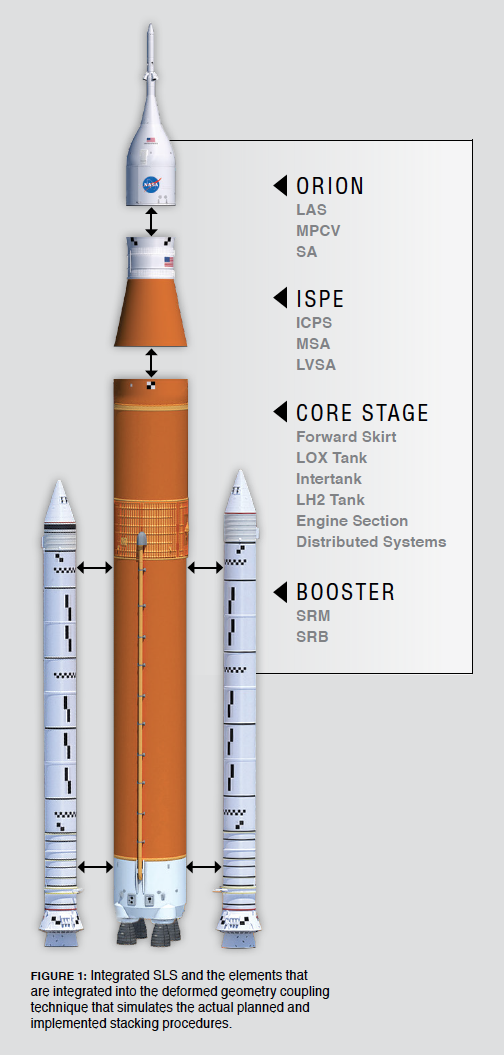Download PDF: Deformed Geometry Coupling Technique
A new approach has been developed in coupling deformed geometry for determining prelaunch stacking loads and to compute vehicle load indicators, inclusive of stacking-induced preloads, for all vehicle system stacking stages. The stacking preloads are a part of the overall “twang” that occurs during lift-off pad separation. Simulating the mechanics of a launch vehicle physical stacking process requires a deformed geometry coupling technique that simulates the actual planned and implemented stacking procedures.
The deformed geometry coupling technique is a specialized modal synthesis procedure that evokes a static version of a nonlinear deadband dynamic analysis first developed for use in SSP system analyses. It has the advantage of being NASA verified and validated (against test) and was first utilized in SSP nonlinear coupled loads analyses over the span of 6 years (2005 to 2011).
This technique integrates easily into the modal synthesis framework and accurately simulates all stacking deformed geometry states without the use of artificial external loads. The preloads are computed directly from the procedure as internal loads, automatically reflected in the load indicator recoveries without any corrections or post-processing steps. All stages of stacking can be simulated including vehicle to solid/liquid rocket booster stacking toe-in.
The nonlinear deadband methodology has been updated to capture deformation effects due to thermal variations (e.g., cryogenic shrinkage) and gravity loading effects to further improve preload prediction accuracy. The geometrically non-linear solution is computed as an iterative scheme based on the closed-form nonlinear static balance equation. The nonlinear static balance equation is a large displacement version of the Timoshenko-Gere equation and solved using a Newton-Rhapson numerical analysis procedure.
For launch vehicles (Figure 1) with multiple attached components (e.g., solid rocket boosters), the gravity loading can be incorporated to further improve strut load predictions and capture potential geometric nonlinear effects. The gravity load analysis can then be re-executed where the feedback and geometry updating process can continue until the desired convergence based on attachment strut loads or strut rotations is achieved.
The advantage of this technique is it allows the analyst to directly incorporate the actual stacking geometry for each vehicle component along with the required leveling and shimming specifications to fully develop a physics-based vehicle’s prelaunch preloaded condition. It provides the ability to perform direct checks against interface requirements and to perform system-level checks to ensure convergence of results. Lastly, this methodology avails itself to any multiple component structure that requires physical substructuring to obtain a physical system representation.
Reference: 1. Gere, J. M. and Timoshenko, S. P., “Mechanics of Material,” 4th edition, July 1991
For more information, contact:
Joel Sills, JSC, joel.w.sills@nasa.gov

























